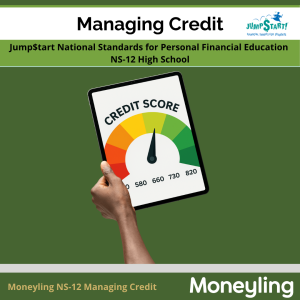Credit is one of the most powerful — and misunderstood — tools in personal finance.
In Moneyling: Managing Credit, students follow relatable, story-based journeys that bring complex financial concepts to life. Each character faces a challenge that mirrors real decisions young adults encounter as they begin building their financial identities.
Cari learns how credit scores are formed and why timely payments matter. Richie explores auto loans and compares secured versus unsecured credit options. Amelia navigates student loans and understands how repayment choices impact long-term goals. Beatriz investigates credit reports and learns how to dispute errors and safeguard against fraud. Mallory examines the cost of borrowing and the hidden risks of buy-now-pay-later offers. Marquis weighs the pros and cons of alternative financial services and learns how responsible credit use builds future opportunities.
Aligned with all Grade 12 National Standards for Personal Financial Education (NS-12) Managing Credit objectives, this course helps students understand borrowing, interest rates, repayment, and the power of maintaining a strong credit history. Through story-driven examples and interactive analysis, learners develop the critical thinking and financial confidence to manage credit wisely and protect their financial future.
The information presented in this course is for educational purposes only and is not intended as financial, investment, or legal advice. Students should not interpret any examples or scenarios as recommendations to buy, sell, or hold specific securities or financial products. Past performance does not guarantee future results. Participants are encouraged to consult a qualified financial advisor or professional before making any personal investment decisions.
Course Information
Categories: Moneyling Financial Education
Authors
Editors
Course
$197/year – access for 35 students (additional students, $5/each)
Individual course in a comprehensive LMS set-up which includes:
- alignment with national standards
- teacher dashboard
- student dashboard
- story-based program
- ready-to-teach lessons
- worksheets
- auto-graded quizzes
- built-in calculators
- final course exam
$9.97 for week trial (only includes course content; no access to LMS features)

